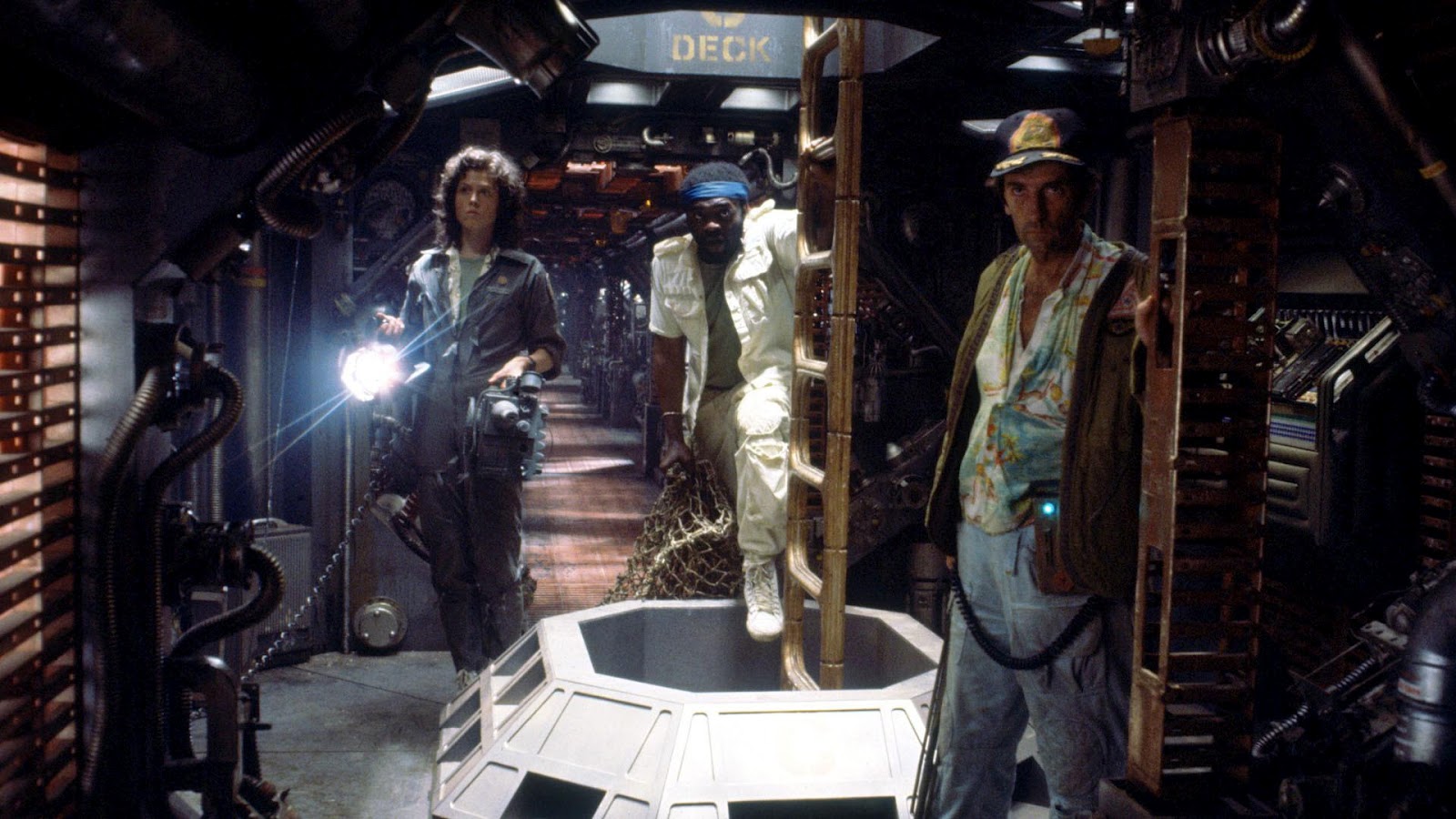Like many moviegoers in 1979,
I was not prepared for “Alien.” The film
relentlessly burrowed into my brain the same way the titular creature
stalked and killed the ill-fated crew of the Nostromo. I had nightmares for years. I drew the
alien compulsively in an attempt to define its features and therefore reduce my
paralyzing fear. It helped a
little. Though the slavering star beast
rarely haunts my dreamscape anymore, any sight of it will always produce a
brief yet electric thrill of terror as I instantly relive my first harrowing
experience of watching this benchmark sci-fi fright fest in the
forbidding darkness of the theater.
The alien is an
implacable force of death; but it is the creatures’ method of attack that incites
such utter panic. It rapes you. It literally rapes your brain to death. Both Brett and Parker are mercilessly skull f*cked by the
fanged tongue which bears no small resemblance to a penis with a mouth full of
metal teeth. This terrible tongue erupts
from a giant curved cranium that further embodies the phallic threat. It’s a double dose of male aggression and forced
penetration. Worst of all, the alien
appears to enjoy the effect that its appearance has on its victims.
The death of Lambert near the
end of the film is the one that affects me the most. She is one of only two females in the Nostromo
crew, and from the very beginning she displays a pensive mood that suggests that
she can feel the impending doom awaiting herself and her crewmates. As they descend to a godforsaken planetoid to investigate a purported distress signal, Lambert is afraid. We can see it on her face. We just don’t know yet how right she is to be
frightened. Lambert's subconscious is thinking what the
audience is thinking:
“We’re all fucked.”
As the individual crew members
fall prey to the extraterrestrial invader, Lambert’s rising terror renders her useless. When the alien finally appears in front of her,
it doesn’t attack her immediately as it did Dallas. It rises
slowly, as if knowing that by merely revealing its hideous majesty Lambert will
be petrified into immobility. It is only
Parker’s vain attempt to save Lambert that the alien breaks off and kills
Parker rather quickly before returning its attention to its initial
victim. Still unable to move, Lambert
remains frozen in place as the alien slides its tail between her legs. This is the last time we see Lambert alive.
Now I know that this shot of
the alien’s tail was borrowed from the attack on Brett, but it has a particular
significance here, especially when taking into account the implicit sexual
aggression of the creature’s nature.
Lambert is the only female crew member that the alien kills, and it
seems to take a unique approach to her demise.
What is most lasting about the horror is that we do not see how Lambert is undone. We only hear
hyperventilating, and then her final scream merges with a roar from the
creature. Alien orgasm, perhaps?
Lambert’s
now naked feet swing freely above the floor while rivulets of blood trickle
down and drop off her toes. How did her
shoes and socks come off? How is she hanging
from the ceiling? Was she hung there by
the alien or did her death throes lock her muscles into a post mortem grip? Ripley’s reaction to seeing Lambert's corpse suggests a
visceral revulsion that can only be expressed in quaking shudders and unintelligible
gasps. Ripley's brain cannot believe what her eyes
are telling her, and she bolts like a rabbit from the hastily glimpsed carnage.
Part of the
lasting allure and terrifying mystery of “Alien” is what we don't see. The film knows exactly what to show us in order to scare us out of our minds.
More crucially, it knows what not
to show. Sometimes suggestion is more
potent than the literal. Sometimes all that's needed is to hint at the horror, and the mind unwillingly delves into psychological depths previously undared. At the bottom, we are assaulted by the acknowledgement of the basest
instincts of human nature. We are
confronted by our Id, and it wants to kill us.














